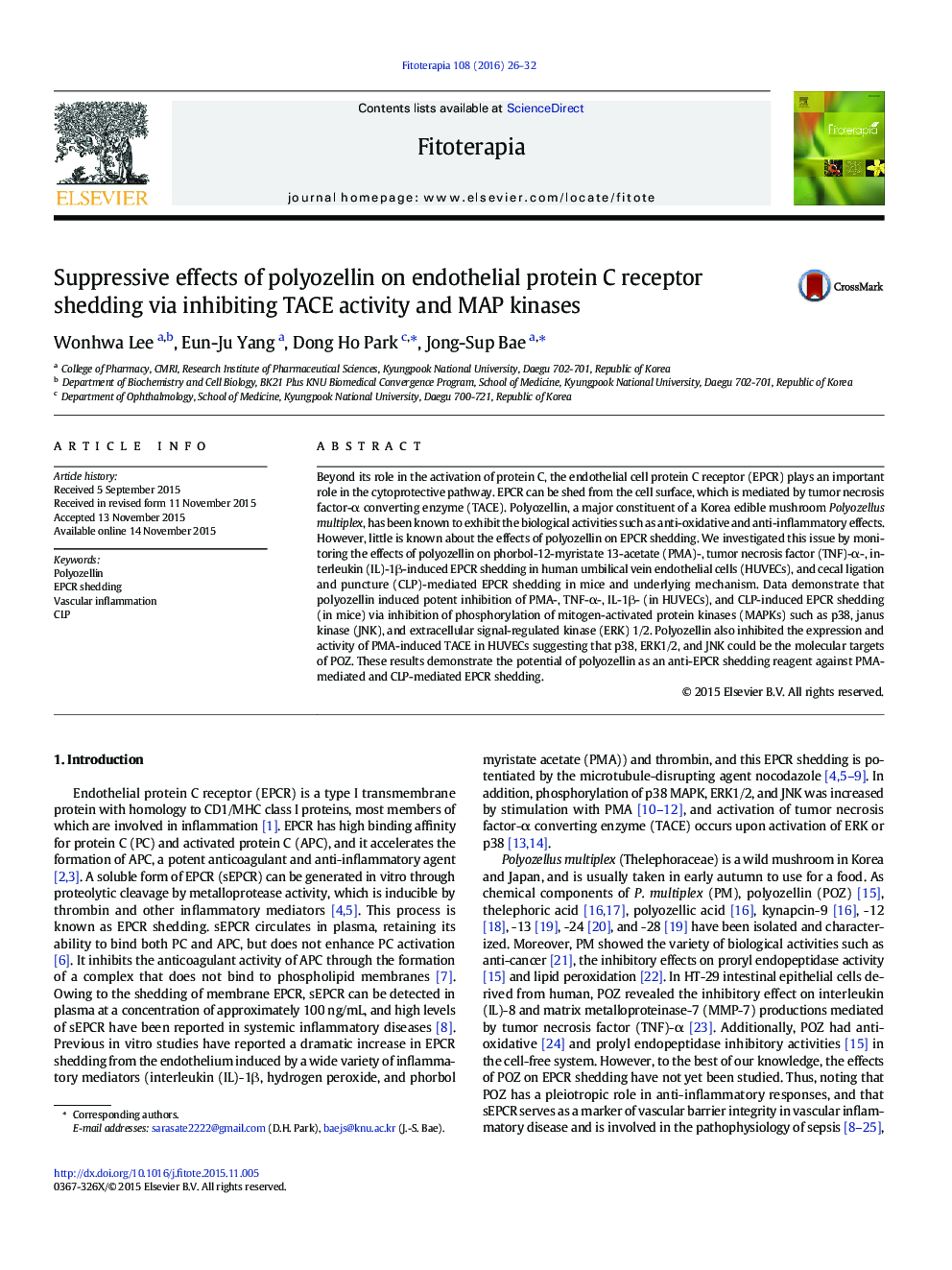| Article ID | Journal | Published Year | Pages | File Type |
|---|---|---|---|---|
| 2538237 | Fitoterapia | 2016 | 7 Pages |
Beyond its role in the activation of protein C, the endothelial cell protein C receptor (EPCR) plays an important role in the cytoprotective pathway. EPCR can be shed from the cell surface, which is mediated by tumor necrosis factor-α converting enzyme (TACE). Polyozellin, a major constituent of a Korea edible mushroom Polyozellus multiplex, has been known to exhibit the biological activities such as anti-oxidative and anti-inflammatory effects. However, little is known about the effects of polyozellin on EPCR shedding. We investigated this issue by monitoring the effects of polyozellin on phorbol-12-myristate 13-acetate (PMA)-, tumor necrosis factor (TNF)-α-, interleukin (IL)-1β-induced EPCR shedding in human umbilical vein endothelial cells (HUVECs), and cecal ligation and puncture (CLP)-mediated EPCR shedding in mice and underlying mechanism. Data demonstrate that polyozellin induced potent inhibition of PMA-, TNF-α-, IL-1β- (in HUVECs), and CLP-induced EPCR shedding (in mice) via inhibition of phosphorylation of mitogen-activated protein kinases (MAPKs) such as p38, janus kinase (JNK), and extracellular signal-regulated kinase (ERK) 1/2. Polyozellin also inhibited the expression and activity of PMA-induced TACE in HUVECs suggesting that p38, ERK1/2, and JNK could be the molecular targets of POZ. These results demonstrate the potential of polyozellin as an anti-EPCR shedding reagent against PMA-mediated and CLP-mediated EPCR shedding.
Graphical abstractFigure optionsDownload full-size imageDownload high-quality image (67 K)Download as PowerPoint slide
